
Vietnam 2021
Gymnastics
Gymnastics
Gymnastics is a sport involving performance of exercises requiring physical strength, flexibility, agility and coordination.
Artistic Gymnastics typically involves the women's events of uneven parallel bars, balance beam, floor exercise, and vault.
Men's events include high bar, parallel bars, still rings, floor exercise, vault, and pommel horse. Other forms of gymnastics are rhythmic gymnastics, various trampolining sports, and aerobic and acrobatic gymnastics.
Gymnastics was first incorporated into the Asian Games in 1978.
List of disciplines
- Aerobic
- Artistic Gymnastics
- Rhythmic Gymnastics
Aerobic means "with oxygen", and refers to the use of oxygen in the body's metabolic or process. Aerobics is a repetitive, rhythmical exercise involving large muscle groups. Aerobic exercise increases the body's demands for oxygen and adds to the workload of the heart and lungs, strengthening the cardiovascular system and helping to develop endurance.
Many types of exercise are aerobic, and by definition are performed at moderate levels of intensity for extended periods of time. Aerobics was first incorporated into the Asian Indoor Games in 2005.
When gymnastics began in ancient Greece more than 2000 years ago, the gymnasium was the centre of cultural activity. Men gathered there not only to practise sport, but to understand art, music and philosophy.
The Greeks believed symmetry between the mind and body was possible only when physical exercise was coupled with intellectual activity.
Today, gymnastics is often termed the ultimate combination of sport and art, but the idea is nothing new.
Plato, Aristotle and Homer heartily advocated the strengthening qualities of gymnastic activity. It is a philosophy that can be found in much of their work.
The term "artistic gymnastics" emerged in the early 1800s to distinguish free-flowing styles from the techniques used by the military.
Although viewed as a novelty by many, gymnastics competitions began to flourish in schools, athletic clubs and various organisations across Europe in the 1880s. When the Olympic movement was resurrected at Athens in 1896, gymnastics made a fitting return.
When gymnastics began in ancient Greece more than 2000 years ago, the gymnasium was the centre of cultural activity. Men gathered there not only to practise sport, but to understand art, music and philosophy. The Greeks believed symmetry between the mind and body was possible only when physical exercise was coupled with intellectual activity.
Today, gymnastics is often termed the ultimate combination of sport and art, but the idea is nothing new.
Plato, Aristotle and Homer heartily advocated the strengthening qualities of gymnastic activity. It is a philosophy that can be found in much of their work.
The term "artistic gymnastics" emerged in the early 1800s to distinguish free-flowing styles from the techniques used by the military.
Although viewed as a novelty by many, gymnastics competitions began to flourish in schools, athletic clubs and various organisations across Europe in the 1880s. When the Olympic movement was resurrected at Athens in 1896, gymnastics made a fitting return.
Related links
Sports Committee
The Sports Committee consist of one Chairman and a minimum of five members. The Chairman, nominated by his NOC, will be elected by the GA, while the Members preferably representing the 5 zones of t...
Sports and Environment Committee
The Sports and Environment Committee consist of One Chairman and Five Members. The Chairman, nominated by his NOC, will be elected by the GA, while the Members preferably representing the 5 zones o...
Sports for All Committee
The Sports for All Committee shall consist of One Chairman and Five Members. The Chairman, nominated by his NOC, will be elected by the GA, while the Members preferably representing the 5 zones of ...
Sports Federations
-

Asian Federation
Asian Gymnastics Union
-

International Federation
International Gymnastics Federation
